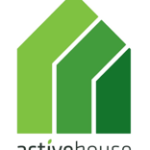027 Indoor Playground of Yueyang County No.3 Middle School
Address of the project: Yueyang District, Hunan (China)
Owner/investor –
Architect: Yueyang County No.3 Middle School – SUP Atelier of THAD

As an educational building in an economically underdeveloped area, this project explores and carefully balances the relationship between ‘comfort of use’ and ‘investment in construction, and provides a weatherproof playground for student activities through a series of passive energy-saving measures, taking into account local climatic conditions, with limited construction funds.
The light environment has been designed to cater for the regular scheduling of events in the afternoon, with an east-facing skylight at the top using a sawtooth roof to provide ample and even natural lighting in the afternoon, while avoiding glare. The actual test shows a light factor DF of 4.20% and a natural light uniformity factor Uc of 0.43. Artificial lighting is provided at the top for use on cloudy days and at night. The building facades on both sides are equipped with landscaped retaining walls and ventilation grilles to promote ventilation while ensuring uniformity of light within sight during exercise and enhancing light comfort during use.
The design of the heat and humidity environment has been based on an in-depth analysis of the local meteorological conditions throughout the year, taking into account the degree of demand for heating and cooling during PE class time during the winter and summer holidays, and establishing a design strategy that encourages natural ventilation and uses opening or closing to regulate the environment. Two rows of ventilation doors on the north and south sides of the building use the principles of wind and thermal pressure ventilation to maximize natural ventilation in the room in order to maintain low carbon dioxide levels and humidity. Ventilation openings are provided at high levels, with ventilation louvers on the upper part of the façade, and the vents are designed to be self-shading using the sloping façade, eliminating the need for mechanical adjustment to open and close. A narrow alleyway between the campus wall and the building on the south side allows the air entering the building to be cooled by the shading of the wall in summer.
The interior facade uses sound-absorbing decorative materials to enhance the acoustic environment inside the building and create a comfortable space.

Natural ventilation, lighting, and temperature were simulated and analyzed during the design phase, and through the optimization of the envelope parameters, good indoor activity space was guaranteed without energy-consuming equipment such as air conditioning. As no heating or cooling equipment is used, the actual operational energy consumption of the project is extremely low. Through actual testing, it was found that the annual energy consumption was 13.6 KWH/m2, corresponding to the primary energy consumption of 36.72 KWH/m2 , which is significantly lower than the data in the relevant national standards.
In addition, considering the actual conditions in less developed areas, the use and maintenance of the photovoltaic system are more difficult, and there is the actual situation of “low-cost performance”. After careful balancing, no photovoltaic system has been installed in this project.

To minimize the impact of construction on the site and surrounding ecology, the project was initially designed to retain the existing camphor trees on the site and to minimize the amount of earth excavation by incorporating the difference in terrain height. The building has been designed using a strategy of cast-in-place concrete structures below and factory prefabricated steel structures above to reduce construction lead times. The prefabricated assembly structure uses steel, aluminum, and other recyclable and reusable materials. The whole life environmental impact analysis of the project shows that the annual carbon emission per unit area of the building is 945kg/(m2 -year). All water-using appliance valves and equipment are selected on the basis of water-saving principles and meet the water efficiency level 2 requirements.
RADAR



